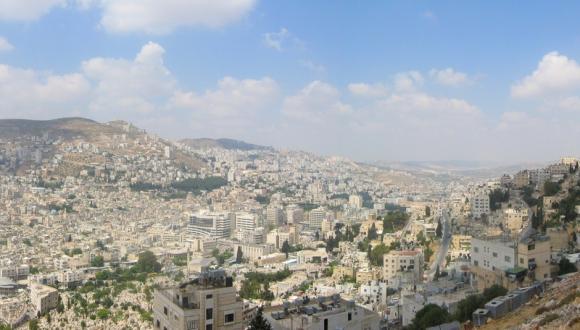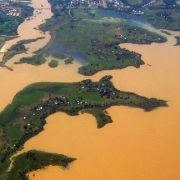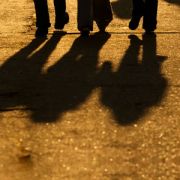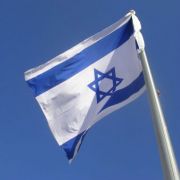Expert Analysis: Is a Third Intifada Brewing?
Intifada, Now?
by Harel Chorev
TEL AVIV NOTES, Volume 8, Number 3
Moshe Dayan Center for Middle Eastern and African Studies
At the end of calendar year 2013, there was a sharp rise in the number of Palestinian attacks on Israeli targets. The public attention created by these incidents raised the recurring question of whether West Bank Palestinians are on the brink of initiating a third intifada. At the moment, the answer appears to be a cautious “no.” Instead, the escalation in violence is the uncoordinated result of two ongoing processes: the negotiations between Israel and the Palestinian National Authority (PNA), and the regional and internal weakening of Hamas. Isolated individuals acting alone, unconnected to the broader political processes, have also contributed to the increase in the number of attacks. For example, on November 12, 2013, an IDF soldier was murdered by a Palestinian youth, who claimed he was avenging the imprisonment of his relatives.
An intifada is a broad-based popular uprising, and it is not necessarily defined by a spike on a graph of security incidents. The surprise of the “Arab Spring” in 2010-2011 encourages modesty when trying to anticipate the moment when popular rage will reach its tipping point and erupt into a full-blown mass movement or uprising. Keeping abreast of the political dynamics on social networks, which have become a key tool for political mobilization, is helpful, but does not guarantee that one will be able to anticipate the next intifada, if and when it comes. For example, today, many Palestinians are concerned that an unexpected Israeli Jewish “Price Tag” (tag mekchir) action might provoke, intentionally or otherwise, a massive popular Palestinian reaction that would then morph into an intifada.
Despite these concerns, and skepticism typical of both Israelis and Palestinians about the prospects that the current peace negotiations will succeed, just the fact that they are taking place has had a calming effect on large sections of the Palestinian public. The traumatic events of Intifadat al-Aqsa (2000-2005) are still a vivid memory to many, and acts as a deterrent, as does the regional instability in the wake of the “Arab Spring.” Economic stability in the West Bank, and even some improvement during the past year, may also play a role in maintaining a certain level of calm (while keeping in mind that revolutions and grass-root uprisings often occur during times of relative economic prosperity).
There is a growing discussion in Palestinian society that suggests that this calm is part of a broad socio-cultural phenomenon reflecting the apparent materialism and indifference of the “self-absorbed generation” (al-Jil al-Maṣlahaji), a term recently used pejoratively by some Palestinians to characterize Palestinian young people who are viewed as focusing on self-advancement rather than on national goals. This critique does not necessarily refer exclusively to the absence of a third intifada, but is being voiced in the broader context of the idea that the younger generation is ambivalent about pursuing collective goals for the benefit of Palestinian society as a whole. Note that this criticism is voiced not only in “hedonistic” Ramallah, but also in Hebron (for example, such criticism was heard following the release of a video clip broadcast on YouTube showing IDF soldiers dancing at a discotheque with residents of the Masharqa al-Fuwqa neighborhood in Hebron) and other places.
If there is no intifada in the offing, how should the current escalation of Palestinian violence be understood? In the past, radical Palestinian organizations have increased their attacks whenever peace negotiations were renewed. At the same time, there has also been a significant change in this pattern in recent years: Hamas, which was responsible for many of the terrorist attacks in the 1990s, is no longer eager to play the spoiler role. It has more to lose today, and is interested in preserving its quasi-sovereign control over the Gaza Strip that it has maintained since June 2007.
Nevertheless, the basic uncompromising militant ethos of Hamas has not changed: it remains bent on undermining any long-term or permanent political arrangement with Israel. Hamas’s political vision does not substantially differ from that of the other organizations currently engaged in violent struggle with Israel, such as Islamic Jihad, which has grown much stronger since the 1990s and which, for all intents and purposes, is an agent of Iran. Yet despite its pragmatic desire to protect its achievements, Hamas finds it difficult to resist or stop the activism of Islamic Jihad, the popular resistance committees, and other militant Palestinian organizations operating in Gaza. It is trying to navigate between the rock of these organizations and the Israeli hard place. The result has typically been a controlled trickle of minor actions against Israel, which Hamas is permitting in order to prevent a more drastic deterioration of the security environment that might jeopardize its rule.

Pictured: A Hamas rally in Bethlehem. Credit: Wikimedia Commons
Since the outbreak of the “Arab Spring,” however, geopolitical changes have altered the landscape in which Hamas operates. On the one hand, the Muslim Brotherhood’s rise to power in Egypt provided grounds for optimism. On the other hand, the bloody civil war in Syria forced Hamas to withdraw from the “Axis of Resistance” (Mihwar al-Muqawama) led by Iran, which also includes Hezbollah and the Islamic Jihad, because this group was supporting Asad. Given this strategic shift, Hamas may have been expecting to profit from closer ties with Muhammad Morsi’s Egypt (see Tel Aviv Notes, vol. 7 no. 10, May 26, 2013), which was an enemy of Asad.
The Muslim Brotherhood’s ouster last July, however, upset Hamas’ plans. Under the leadership of General ʿAbd al Fattah al-Sisi, Egypt has specifically targeted Hamas, taking strong measures that have included destroying hundreds of smuggling tunnels that were an economic and military lifeline for the Gaza Strip. These developments have isolated Hamas politically and damaged Gaza’s economy, which directly affects the security environment there. Hunger is not prevalent, but there is a severe fuel shortage, and recently access to electrical power has been available only four hours a day. The frustration of Gaza residents, which has been directed to a large extent against Hamas, is clearly evident on social media.
Hamas fears these developments will undermine its legitimacy and weaken its authority. It has recently tried renewing its ties with the Muqawama axis, and particularly with Iran. In trying to curry favor with Iran, Hamas may be turning a blind eye towards recent attacks carried out by the smaller organizations like Islamic Jihad, which is Iran’s client. A common view in the Palestinian Authority is that the current escalation is an effort by Hamas to destabilize the West Bank by encouraging militant attacks from there. Among other things, these well-founded suspicions are based on several unsuccessful attempts by Hamas in recent months to organize “days of rage” in the West Bank relating to the issue of the Haram al-Sharif/Temple Mount.
This tactic has three aims: first, to divert attention of Gaza Strip residents away from their worsening economic predicament and to show that there is unrest in the West Bank as well as Gaza, due to the constant pressure from Israel, and not necessarily because of Hamas’s shortcomings; second, thwarting the peace negotiations, which is still a Hamas objective, as its spokesmen have stated on several recent occasions; and third, attacks directed against Israel from the West Bank will not necessarily result in punitive actions against Hamas in the Gaza Strip, and Hamas can thereby avoid risking confrontation with Israel and its potentially harmful effects on its position.
Consequently, the PNA’s effective security cooperation with Israel has continued, with the understanding that escalating attacks will serve neither the Palestinians’ relations with Israel and the international community nor the PNA’s standing in the internal Palestinian political arena.
The PNA security agencies are key players in today’s security environment. Since the end of the second intifada, in which many Palestinian security personnel took an active part, these agencies have been thoroughly reorganized under U.S. guidance and training, and today they are producing professional commanders, whom many regard as the next wave of Palestinian political leadership. For now, these organizations are showing no signs of instability or independence from the political echelon.
Therefore, as long as the two processes continue – the Israeli-PNA peace talks and the increased regional pressure on Hamas – the attacks on Israel are likely to continue as well. With that said, this escalation will not necessarily translate into a broadly-based popular uprising in the near future. By the same token, if the negotiations end with no results, or if a a third party, such as the “Price Tag” activists, intervenes, the situation could change, and the ”self-absorbed generation“ of young people may once again take up its traditional role and shoulder the main burden of a third intifada.
 TEL AVIV NOTES is an analytical update on current affairs in the Middle East, published by TAU's Moshe Dayan Center for Middle Eastern and African Studies, with the support of the V. Sorell Foundation.
TEL AVIV NOTES is an analytical update on current affairs in the Middle East, published by TAU's Moshe Dayan Center for Middle Eastern and African Studies, with the support of the V. Sorell Foundation.





